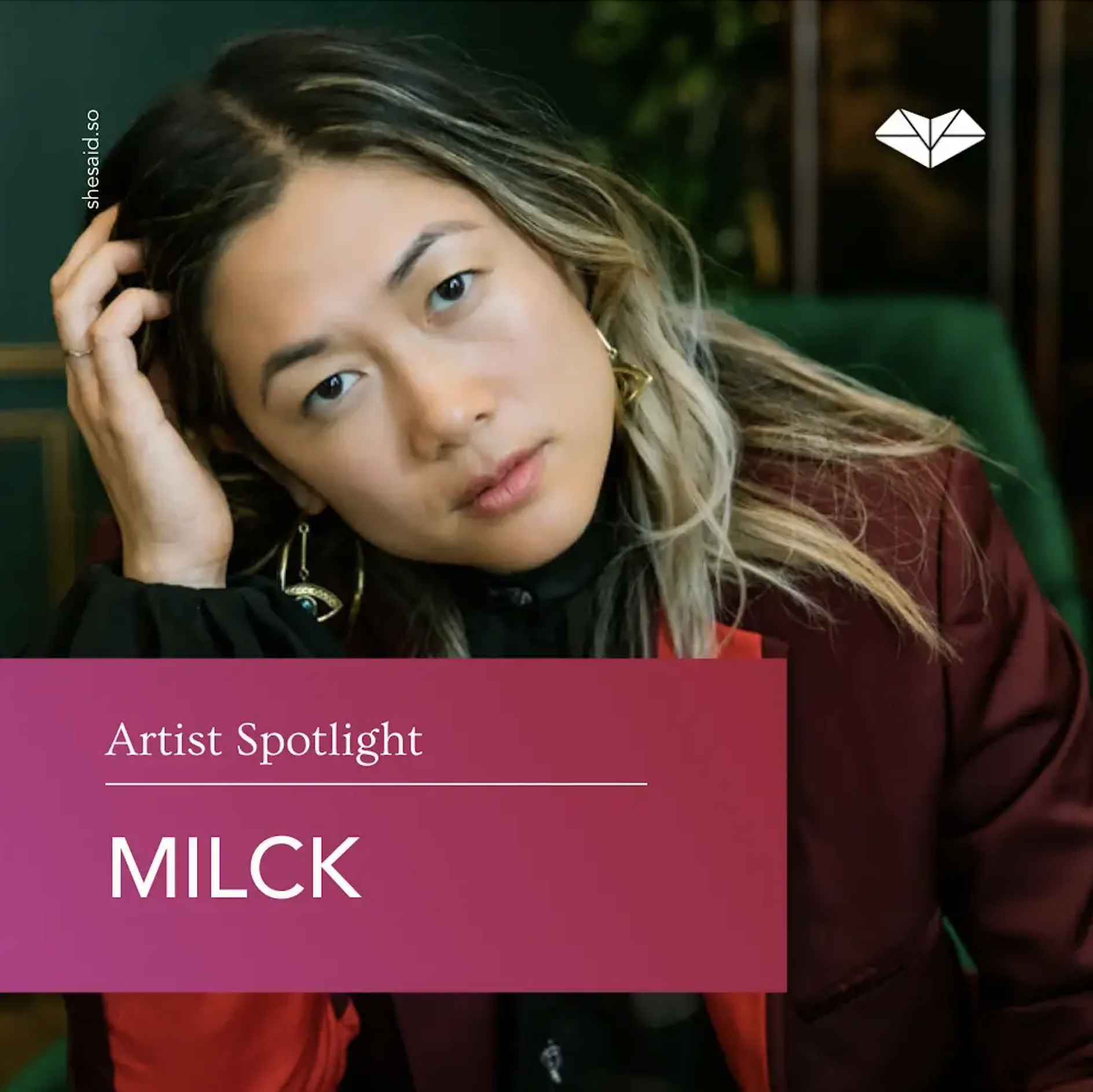Winding back five years, as tensions were brewing in the U.S., MILCK performed her song “Quiet”, surrounded by an acapella of other women. Such a personal message became the words many women needed at that time, “I can’t keep quiet”, and the song became an unofficial anthem of the movement. Now in the middle of writing two albums, we catch up with the artist on her approach to songwriting, staying free as a creative, and making the process more important than the outcome.
Tell us more about your artist journey and how your sound has developed to where it is today?
Music has always been a form of truth telling for me — As a child, songwriting was a safe place for me to express my desires, dissents, and delights about life. To this day, songwriting continues to be my favorite way of processing the more complex and challenging parts of life. I love how music helps me alchemize the anxieties of living into something sonically cathartic and hopeful.
I have always been able to hear melodies in everything- from the pitch of the coffee grinder to the rhythms that the closing car doors in the grocery store parking lot simulate. Sounds in the natural world can spur melodic or rhythmic ideas. Paired with intentional musical instruments, melodies and chunks of lyrics flow into my mind. Over the years I have learned to collect these ideas with as much diligence as possible. What I hear is very eclectic; I have a lot of different moods and energies that I can write in, so I have learned to find creative ways of honoring all my different sides, regardless of a capitalist market that desires for a definable style. Currently I’m writing two different albums- one is more gritty and cinematic, while the other is more organic and minimal. As I grow as an artist, I have learned to be as free as possible in the creation, while also being as intentional during the editing process. I understand the difference of phases, and have empowered myself with my own rituals that empower my unique flow.
Who are some of the key artists and creators who have inspired or influenced you?
Tori Amos
Glennon Doyle
Lao Tzu
John Lennon
Yoko Ono
Nina Simone
Audre Lorde
Dan Wilson
Kate Bush
Yumi Sakugawa
We’re talking to you on the 5 year anniversary of “Quiet”, which became the unofficial anthem of the women’s march in 2017. How did it feel to have written something which empowered and moved so many women during this great moment of protest?
As someone who feels quite a bit of anxiety and worry, this viral moment of “Quiet” was the most divine reminder for me to trust: To trust that my story is enough. To trust my inner voice that whispers to me. To trust that I’m not alone in my obstacles as a survivor, Asian human, and woman.
I also learned that when I mix self-healing with intentional storytelling, I can share in the healing with quite literally the world. Being able to witness something that my cowriter Adrianne Gonzalez and I created become something so deeply integrated into our culture’s yearning for healing has forever deepened my respect for the power of songs.
For a while, the high of being able to connect so deeply with people all over the globe also warped my standards for my other songs. The intense goal of writing more songs to become cultural anthems did freeze me up for a bit, no matter how much I consciously told myself to avoid that desire. I had to learn to go gentle on myself, and to remember that what truly was the gift was the beautiful process of honestly healing myself through the song. I’ve adjusted the goal post from “write global anthem to heal women” to “write song to heal self”, and it feels MUCH BETTER. Lol.
Now, I do my best to focus on the process, rather than the outcome.
What do you see the role of art being when it comes to politics and the ability to impact the world we live in?
In a capitalist driven culture that feeds on human beings becoming commodified worker bees for the benefit of a select few elite, I think art is a gorgeous practice for questioning the existing paradigm. Art is a crucial tool that human beings use to remind ourselves of our wildness and our worthiness. Art is a powerful reminder of our yearning to feel loved and free. Art is a powerful reminder of how unique we each are, while being so similar to each other at the same time.
In Tori Amos’s book Resistance, she reflects on how a radio DJ showed her a list of forbidden songs during the period of crisis after 9/11. Songs that had lyrics that could trigger people, like airplanes, etc. One of the songs that was banned from radio playlists was “Imagine” by John Lennon and Yoko Ono! Tori Amos speculates that the song was banned for being too powerful in its reminder for a possibility of peace during a time that the states was yearning to go to war.
Art has the power to open people’s hearts, which then more effectively opens people’s minds, priming large populations of people to act. Studies have shown that storytelling increases the amount of serotonin in the brain, which increases the likelihood for a human to take action. How amazing is that? Art sparks movements. Activists provide the fuel to keep the movements sustainable.
You’ve collaborated with many brilliant creatives. Amanda Gorman and Jordin Sparks to name a couple. In your opinion, what defines a strong musical collaboration?
A strong musical collaboration is a conjoining of artists who have had a lot of intentional practice with listening to and vocalizing their intuitions and instincts.
The more clear and honest we can each be with ourselves, the more clear and genuine a collaboration can be.
Amanda Gorman and Jordin Sparks are both very strong and intelligent women who have harnessed their ability to listen to their own instincts, which made it a joy to cocreate with them.
What can we expect from your forthcoming album?
I am learning to slow down to listen to and trust my instincts more and more, so I’ve been able to grow as a producer myself. As I grow as a producer, I have leaned into my curiosity with sonic textures. You’ll notice this album has a heightened level of sonic range, allowing my sense of angst and grittiness to cathartically unleash.
shesaid.so is a community guided by intersectionality. In your opinion, how could the music industry do better in terms of inclusivity?
“SLOW DOWN.”
When we rush, we often practice what I call “rushist” practices… Efficiency does not prioritize the nuances of humanity, so we need to slow down to update our contact lists. Despite the perceived financial “cost”… rather than looking at slower production schedules as you search for and train more BIPOC employees, I encourage all of us to look at it as a financial “investment” in creating more holistic and representative community at work.
You can learn more about MILCK through her Instagram @milckmusic and her website.

